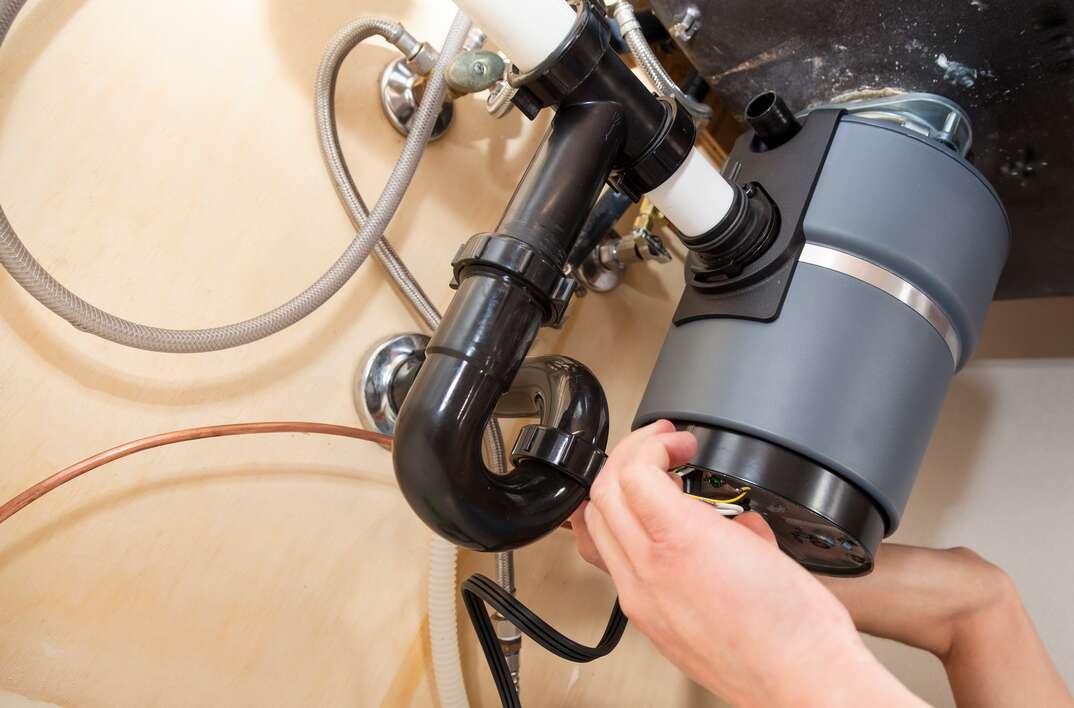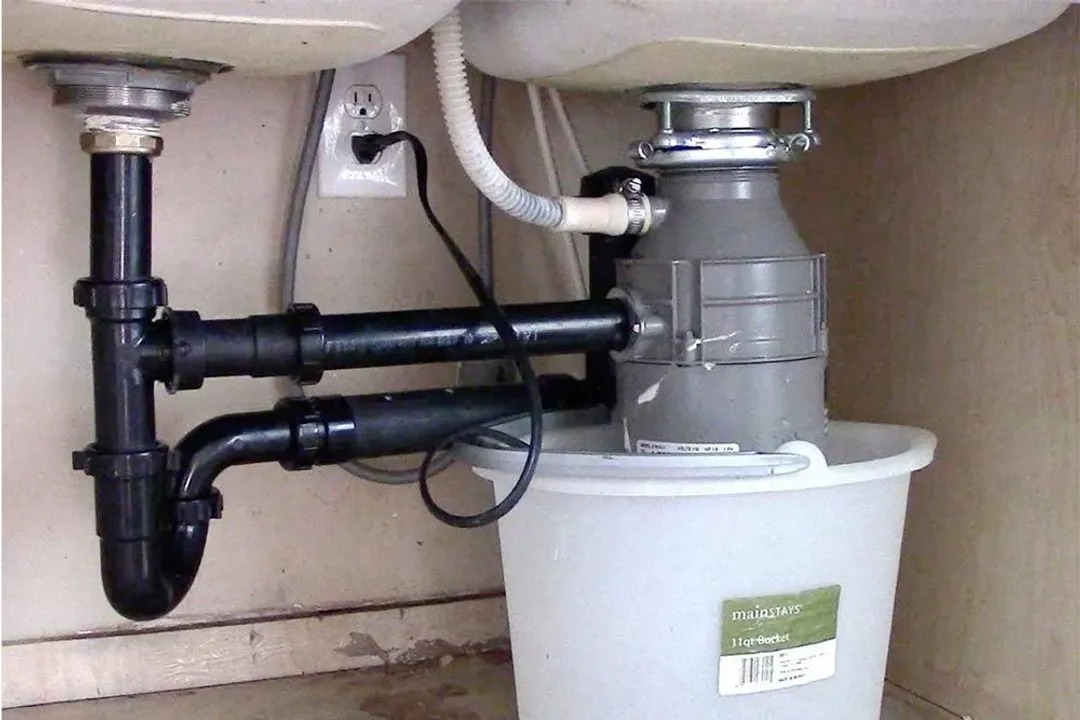Your Definitive Guide to Fixing a Leaky Waste Disposal Unit
Your Definitive Guide to Fixing a Leaky Waste Disposal Unit
Blog Article
They are making a few great pointers on the subject of Tips on Fixing a Leaking Garbage Disposal as a whole in the article down the page.

Waste disposal unit are necessary cooking area appliances that help in dealing with food waste efficiently. However, a leaking waste disposal unit can be an irritating and unpleasant trouble to deal with. Fortunately, lots of leakages can be repaired quickly with a couple of basic actions. In this post, we will go over how to repair a dripping garbage disposal effectively.
Introduction
Waste disposal unit are installed under kitchen sinks and are created to shred food waste right into smaller sized items, enabling it to travel through the plumbing system conveniently. While these devices are generally reliable, leaks can take place gradually because of damage, loosened connections, or damages to the system.
Step-by-Step Overview to Dealing With a Leaking Garbage Disposal
Switch off the Power
Prior to trying any repair work, make sure that the power to the garbage disposal device is shut off to prevent the danger of electric shock.
Find the Leak
Identify the precise location of the leak and determine the reason
Tighten Connections
Make use of a wrench to tighten any type of loose links in between the disposal device and the pipes system.
Change Seals or Gaskets
If the leak results from worn seals or gaskets, get rid of the old elements and replace them with new ones.
Patching Cracks or Holes
For splits or openings in the disposal unit, use epoxy or an ideal patching product to secure the damaged area.
Identifying the Resource of the Leak
Prior to attempting to repair a dripping waste disposal unit, it is vital to identify the resource of the leak. This can generally be done with aesthetic assessment or by carrying out basic examinations.
Visual Inspection
Inspect the garbage disposal unit meticulously for any type of indications of water leakage. Pay close attention to locations around seals, gaskets, and link points.
Testing for Leakages
One way to check for leaks is by running water through the disposal device and looking for any kind of noticeable indications of leakage.
Usual Reasons For Leakages in Garbage Disposals
Worn Seals and Gaskets
Seals and gaskets play a crucial duty in preventing water from dripping out of the garbage disposal. In time, these components can weaken, causing leaks around the disposal device.
Loose Links
The links between the garbage disposal and the plumbing system can come to be loosened gradually, causing water to leakage out throughout operation.
Splits or Holes in the Disposal Unit
Physical damage to the garbage disposal, such as cracks or openings in the housing, can also lead to leaks.
Tools and Products Needed for Repairing a Leaking Garbage Disposal
Before beginning the repair service process, gather the needed tools and materials, including a screwdriver, flexible wrench, plumbing's putty, replacement seals or gaskets, and epoxy or patching material for repairing cracks or openings.
Testing the Garbage Disposal After Repair Work
Once the fixing is full, test the waste disposal unit by running water via it to guarantee that the leak has actually been fixed.
Preventive Upkeep Tips to Prevent Future Leaks
To avoid future leaks, it is important to carry out regular upkeep on your garbage disposal. This consists of keeping it clean, preventing placing non-food items or difficult objects down the disposal, and regularly looking for leaks or various other problems.
Verdict
To conclude, taking care of a dripping waste disposal unit is a fairly straightforward process that can be finished with fundamental devices and materials. By complying with the steps outlined in this article and exercising preventive maintenance, you can keep your waste disposal unit in good working condition and prevent pricey repairs in the future.
What to Do About a Leaking Garbage Disposal
A leaking garbage disposal often goes unnoticed until you confront a sopping cabinet, a foul-smelling puddle, or an audible drip-drip-drip from the unit. The fix can be frustrating, too, because the leak can stem from a number of components in the system. Fortunately, with a little sleuthing, you can zero in on the leak and—depending on the exact location—stop the icky oozing and repair the component that caused it. Worst case scenario, if it turns out that the garbage disposal must be replaced, installing a new one is a reasonable do-it-yourself task for those with basic plumbing skills. Read on to keep the cash you’d otherwise hand over to a pro.
Prepare to find the leak
Prior to testing the garbage disposal for leaks, unplug it at the wall outlet and turn off the power from the breaker box to prevent electrical shock. Then insert a watertight sink stopper into your sink drain and wipe the unit dry with a clean cloth. In any handy container, mix a few drops of food coloring into a few cups of water, and pour the dyed water onto the sink stopper to help you locate the leak.
Investigate the source
the top, where the disposal meets the sink drain the side, where the dishwasher hose or main drain pipe connects to the disposal or the bottom of the unit Inspect each of these locations while gliding a light-colored rag over the unit; the dyed water will readily show on the rag and reveal the location of the leak. If a leak isn’t immediately apparent, remove the sink stopper and pour a few more cups of dyed water down the sink drain, then check for leaks again. Leaks near the top of the unit are more likely to show themselves while the sink is plugged, while side and bottom leaks are more noticeable while the sink is unplugged.
The metal sink flange that sits directly inside the sink drain is typically sealed around the top with plumber’s putty (a clay-like sealant) and then secured from under the sink with bolts. If the plumber’s putty deteriorates, or the bolts loosen, the flange can no longer form a watertight seal between the sink drain and the disposal—which could cause a leak at the top of the unit.
To reseal the leaky flange, you must first detach the garbage disposal. Start by loosening the screws securing the main drain pipe to the disposal, then loosen the screws in the metal clamp securing the dishwasher hose to the disposal and detach the drain pipe and dishwasher hose from the disposal. Loosen the screws in the mounting ring that connects the disposal to the metal mounting assembly beneath the sink, then pull down the disposal and carefully set it on a clean, dry surface. Loosen the bolts in the mounting assembly with a wrench, then pull down the mounting assembly and set it near the disposal.

I was shown that report on The Handy Guide To Fixing Your Garbage Disposal Leaking from a friend on a different website. Sharing is good. Who knows, you may just be doing someone a favor. Thanks a lot for your time. Don't forget to pay a visit to our site back soon.
Call Today Report this page